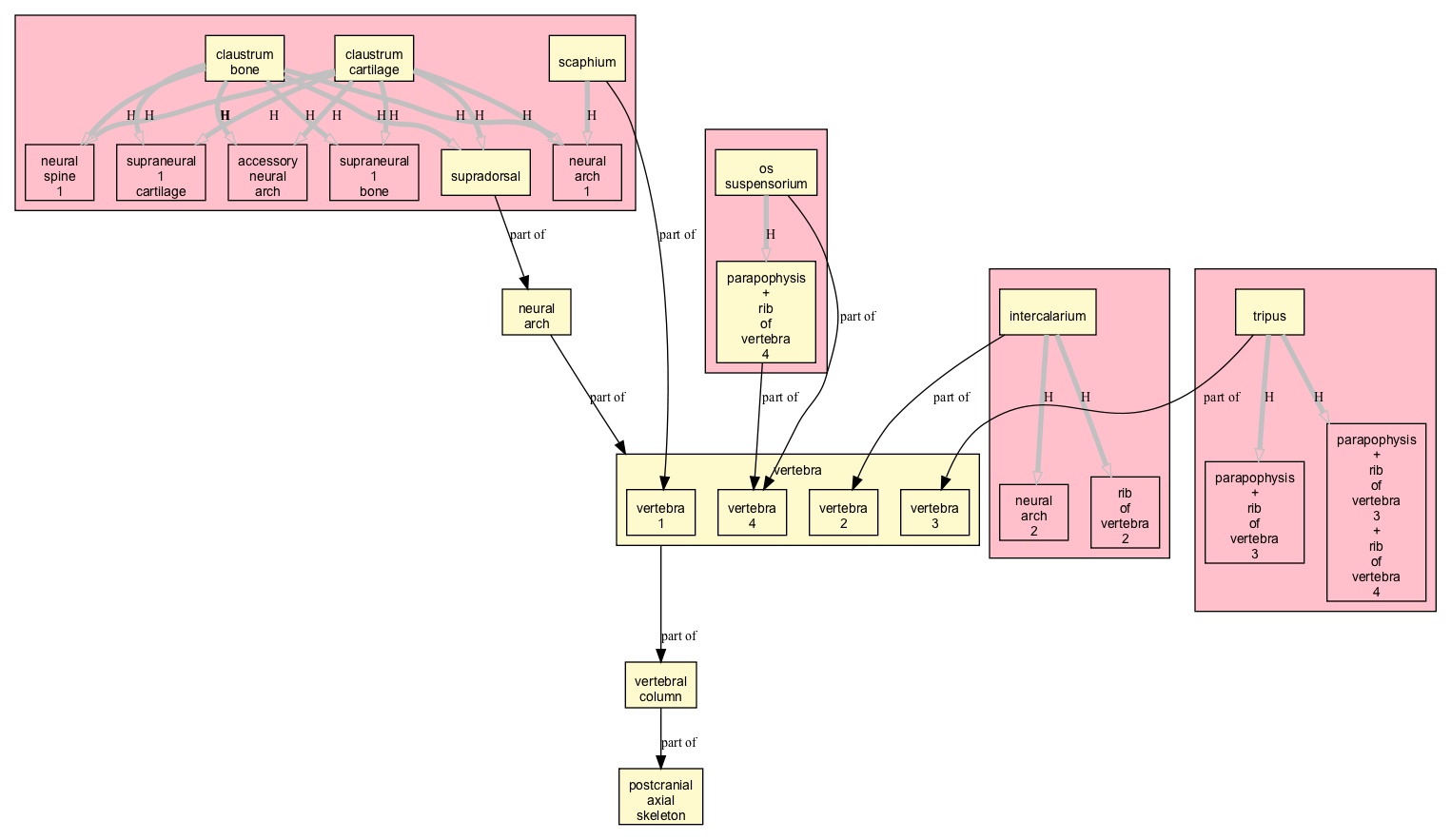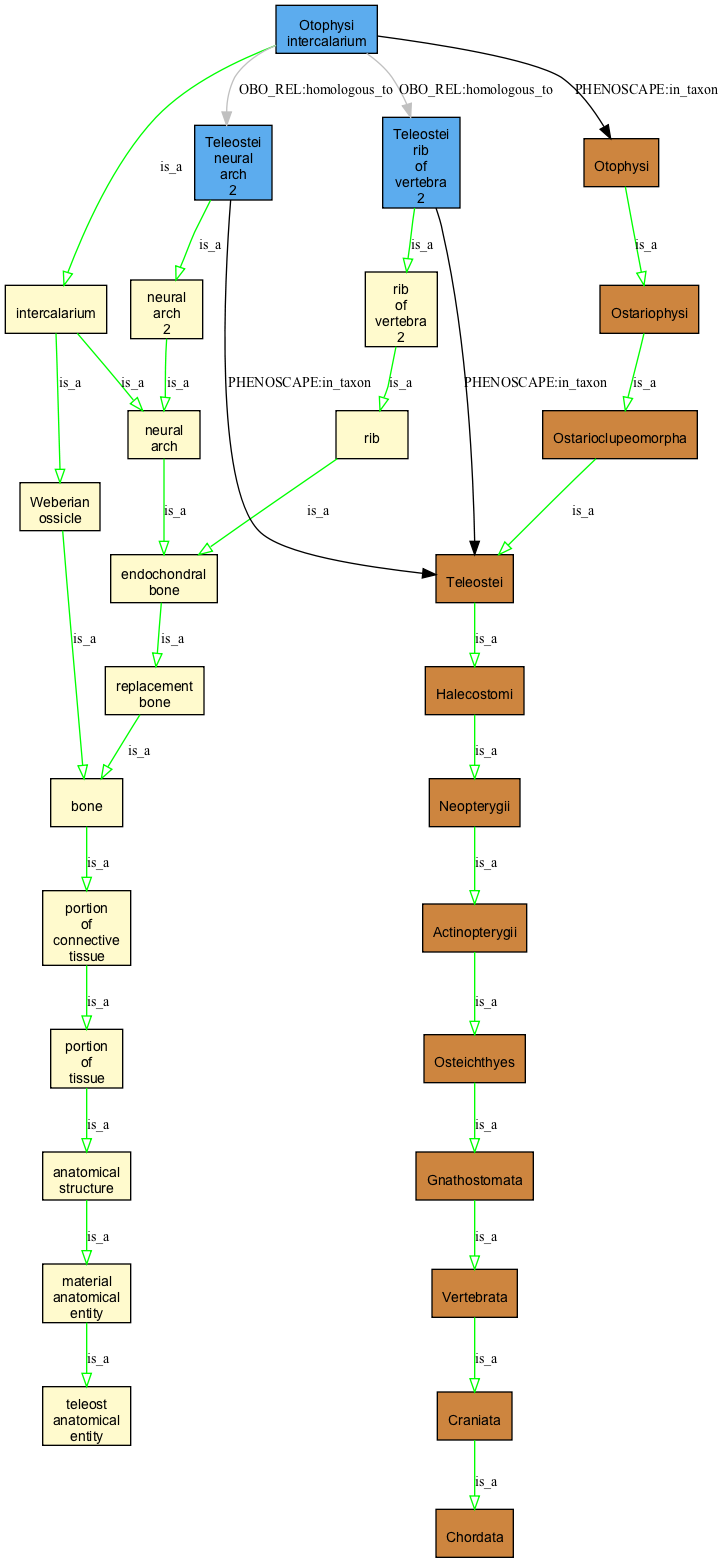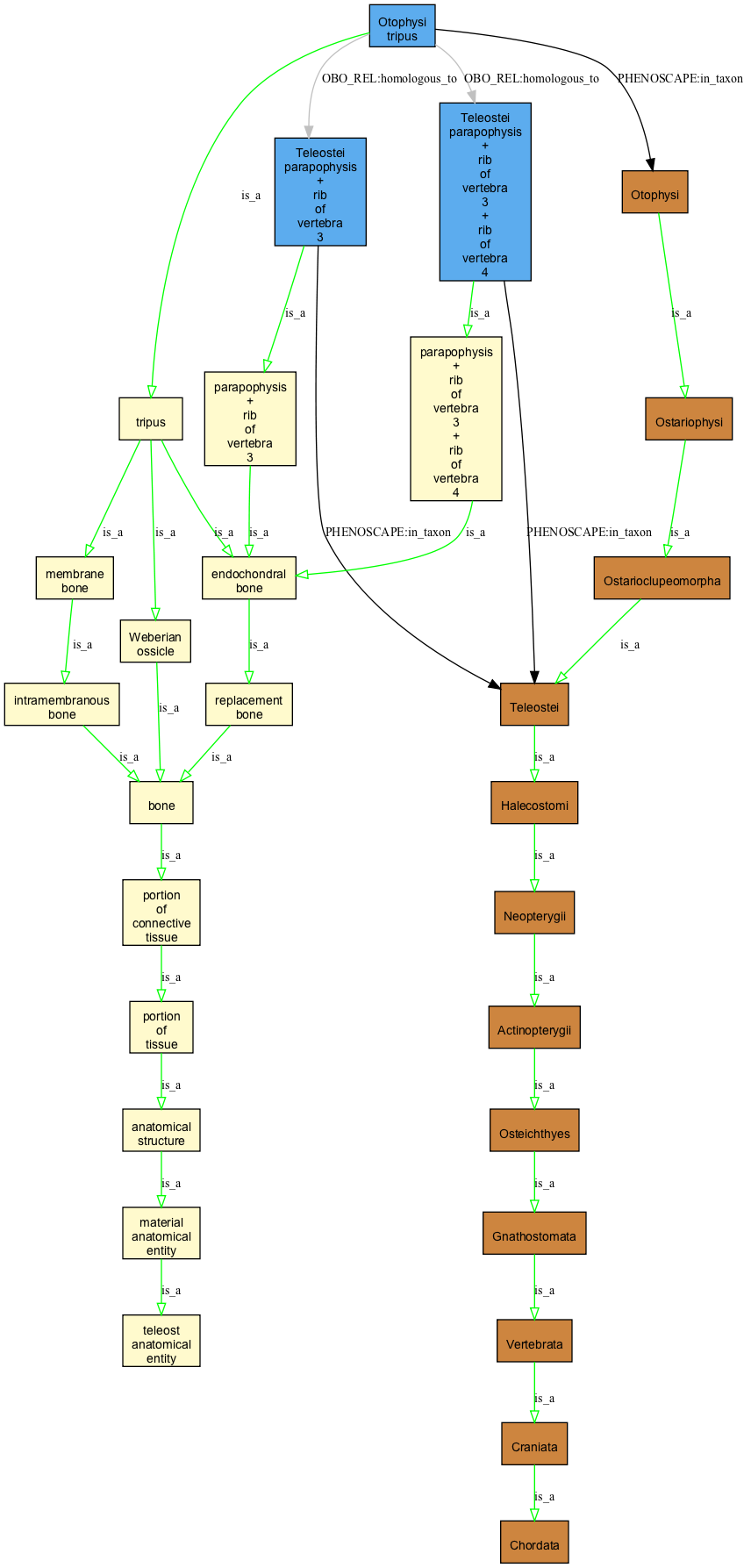Difference between revisions of "Transitive homology"
| Line 13: | Line 13: | ||
== TAO classes with homology statements == | == TAO classes with homology statements == | ||
| − | from latest KB:{|class="wikitable" style="text-align:center" border="1" | + | from latest KB: |
| + | |||
| + | {|class="wikitable" style="text-align:center" border="1" | ||
|- | |- | ||
! ID | ! ID | ||
Revision as of 02:29, 18 March 2010
This page explores the transitive closure of the homologous_to relation. Currently in OBD this is a binary class-level relation that holds between two taxon-specific anatomical entities.
I propose the following expansion to OWL-DL instance-level quantified axioms:
homologous_to(A,B) ==> Class: A SubClassOf: descendedFrom some (hasDescendant some B) Class: B SubClassOf: descendedFrom some (hasDescendant some A)
If we make the simplifying assumption that directlyDescendsFrom is functional then it follows that class-level homology is transitive. What are the consequences of making this strong assumption? We can explore this with existing phenoscape data.
Contents
TAO classes with homology statements
from latest KB:
| ID | name | Def |
|---|---|---|
| TAO:0000429 | scaphium | Neural arch and Weberian ossicle that is reduced in size relative to other neural arches. Scaphium has a process which articulates with the first centrum. |
| TAO:0000525 | intercalarium | Neural arch and Weberian ossicle that has been modified in shape relative to other neural arches. Intercalarium includes three parts: an anterolateral process (the manubrium) which is embedded in the interossicular ligament and the ascending and articulating processes. |
| TAO:0000637 | claustrum cartilage | Postcranial axial cartilage and Weberian ossicle that is located dorsal to the scaphium. The claustrum cartilage is bilaterally paired. |
| TAO:0000698 | tripus | Endochondral bone, membrane bone, and Weberian ossicle that is an element of third vertebra. Anteriorly it attaches to the interosseus ligament and posteriorly it extends as a transformator process embedded in the tunica externa of the swimbladder. |
| TAO:0001171 | os suspensorium | Endochondral bone and Weberian ossicle that is an element of the fourth vertebra that curves ventrally around the anterior head of the swim bladder. |
| TAO:0001253 | neural arch 2 | Neural arch that is the second after the neurocranium. |
| TAO:0001335 | supradorsal | Supradorsals are small paired nodules of cartilage positioned at the distal ends of neural arches and the proximal end of neural spines (Arratia et al., 2001). |
| TAO:0001396 | parapophysis + rib of vertebra 4 | The parapophysis + rib, fused to the centrum, extends laterally then angles anteroventrally. A thin plate, the os suspensorium fuses to its median surface. |
| TAO:0001592 | claustrum bone | Endochondral bone, membrane bone, and Weberian ossicle that is located dorsal to the scaphium. The claustrum bone is bilaterally paired. |
| TAO:0001877 | neural arch 1 | Neural arch that is the anteriormost neural arch. |
| TAO:0001878 | rib of vertebra 2 | Rib that articulates with the parapophysis of the second centrum. |
| TAO:0001884 | accessory neural arch | Neural arch that is located posterior to the neurocranium and anterior to neural arch 1. The accessory neural arch is not associated with a vertebral centrum. |
| TAO:0001885 | neural spine 1 | Neural spine that is associated with the first vertebra. |
| TAO:0001888 | supraneural 1 bone | Supraneural bone located dorsal to vertebra 1. |
| TAO:0001889 | supraneural 1 cartilage | Postcranial axial cartilage located dorsal to vertebra 1. |
High Level Overview
This is a high level part_of view of all homology relationships, projected onto TAO:
- homology statements are generalized to the TAO, taxa not shown
- clusters of homology relationships are shown in 4 distinct boxes
- vertebra clustered into a box
- only relations shown are homology and part_of
Here we can see there are 4 distinct clusters, according to the vertebra number affected
Otophysi intercalarium
this is annotated to be homologous to the neural arch 2 and vertebra 2 in Teleosti. From this, what can be said of the relationship between these two entities?
Note that for compactness reasons this diagram doesn't show the part_of relations.
- intercalarium part_of v2
presumably there should be some kind of relationship between "rib of v2" and "v2"
Otophysi tripus
this is annotated to be homologous to (i) the fusion of parapophysis + rib of v3 and (ii) the fusion of parapophysis + rib of v3 + rib of v4 in Teleosti. What can be said from this of the relation between (i) and (ii)


